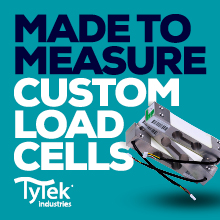Certified Weighing Technician (CWT)Certified Weighing Technicians have a broad range knowledge of the technical and regulatory requirements of the industry, including installing, evaluating and servicing the customers weighing needs. The Certified Weighing Technician has:
Assessment StructureThe CWT examination will consist of approximately 100 multiple-choice questions (MCQ). Several types of MCQs may appear on an examination. The A-type consists of a stem and five options; it is the most common MCQ. The B-type is a short matching item. The K-type allows a combination of options to be selected. The S-type is a scenario with several common item types (or sets of items). Eligibility RequirementsThe prerequisites for taking the Certified Weighing Technician test are:
Examination ContentCertified Weighing Technician Examination OutlineI. Small-Light Capacity (approx. 16% of exam)
A. Testing
B. Calibration
C. Troubleshooting
II. Medium-Heavy Capacity (approx. 16% of exam)
A. Testing
B. Calibration
C. Troubleshooting
III. Balance (approx. 16% of exam)
A. Testing
B. Calibration
C. Troubleshooting
IV. Systems (approx. 16% of exam)
A. Communications Diagnostics
B. Systems Set-Up
C. Systems Overview
D. Basic Blueprints & Schematics
V. Documentation (approx. 6% of exam)
A. Placed-in-Service.
B. As Found
C. As Left
D. Awareness of Customer Documents
VI. Safety (approx. 5% of exam)
A. Lock-out/Tag-out
B. Confined Space
C. Power Safety
D. Personal Protection Equipment (PPE)
VII. Legal Regulations (approx. 5% of exam)
A. Handbook 44
B. NTEP
C. Local Requirements
VIII. Testing Regulations (approx. 5% of exam)
A. GIPSA
B. PUB 112 EPO
C. HB 44
D. Proper Class of Weights
IX. Test Equipment/Tools (approx. 5% of exam)
A. Maintenance of Test Weights
B. Device Knowledge
C. Protocol Analyzer
D. Manufacturers’ Specifications
X. Basic Scale Components & Technical Terms (approx. 10% of exam)
A. Mechanics
B. Electronics
C. Terms and Definitions
D. Basic Computer Knowledge
The exam will contain approximately 100 questions, and the time to complete the exam will be a maximum of three hours and fifty minutes.
Certified Weighing Technician Examination Sample Questions001. When replacing a local cell in a bench scale, the technician should:
(1) not re-adjust overload stops.
(2) use the original load cell shims, if possible.
(3) allow twice acceptance tolerance errors.
(4) run a shift and linearity test.
A. (1), (2) and (3) only are correct.
B. (1) and (3) only are correct.
C. (2) and (4) only are correct.
D. (4) only is correct.
E. All are correct.
The correct answer is "C.”
Match the scale types and accuracy classes.
A. analytical balance
B. wheel head weighers
C. hopper scale (non-grain)
D. 10,000 lb. floor scale
E. jeweler’s scale
002. class I
003. class II
004. class III
005. class III L
The correct answers are "A”, "E”, "D” and "C.”
006. The minimum amount of test weight required to test a 300 lb. scale in a legal-for-trade application is:
A. 50 lb.
B. 75 lb.
C. 150 lb.
D. 300 lb.
E. whatever can be conveniently carried.
The correct answer is "D.”
|



